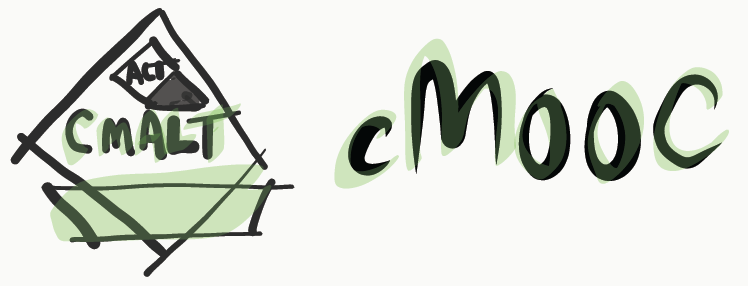This week involves three suggested activities:
- creating and sharing a Blog post or VODCast discussing the constraints and benefits, technical knowledge, and deployment of learning technologies. Keep it succinct – 500 words blog post or 2-3min VODCast embedded in your blog. You could use: YouTube, Vimeo, Instagram, Clips (iOS) etc… to create and share the VODCast.
- Sharing a Digital Literacy mapping exercise. Create your own Visitor/Resident-Social/Professional map (#VandR cc @Daveowhite) of your use of online and social media tools, and share it via the Moodle discussion forum https://Community.sotel.nz , and Twitter with the #cmaltcmooc and #VandR hashtags. You can see some examples from the 2017 participants at #VandR maps for #CMALTcMOOC . Reflect on how your map may look different to your students’!
- Exploring innovative pedagogies during our weekly Webinar discussion. See the Tips for Joining YouTube Live Hangouts to join the discussion this week online Friday 10:30am NZ time.
“Operational Issues” is one of four required core elements of your CMALT portfolio. Create a Blog post or VODCast (Video PODCast) discussing the constraints and benefits, technical knowledge, and deployment of learning technologies, particularly within your own teaching context. Explore potential creative solutions to any of these constraints. Share your Blog post or VODCast using Twitter with the #cmaltcmooc hashtag, and link to your example reflection by adding the URL and description to the Project Bank for Week2 https://cmaltcmooc.mosomelt.org/type/2-operational-issues/by selecting “Submit Project” from the Project Bank main menu on our WordPress hub. For example: How might a V&R Map give you insights into the issues surrounding the use of social media in education?
From the CMALT Guidelines:
Core area 1: Operational issues
Candidates should demonstrate both their understanding and use of learning technology. “Use” might include the use of technology to enhance learning and teaching, the development, adoption or deployment of technology to support teaching, training or learning.
This should include evidence of three sub areas:
a) An understanding of the constraints and benefits of different technologies
You should show how you have used (or supported others to use) technology appropriately, given the constraints and benefits it provides within your context. This might include how you selected particular technologies to meet the specific needs of users (students or staff).
Evidence in support of such statements might include a brief commentary on the choices behind the development and use of learning technology that influence its fitness for purpose. (This might discuss issues as affordances of the technology, viability, sustainability, scalability, interoperability and value for money.) You may already have something like this in the form of a design outline, proposal, conference presentation or similar. You should include such existing documentation wherever it seems relevant. Alternatively, you might want to take this opportunity to find out more about a technology you have deployed and produce a report on its viability.
b) Technical knowledge and ability in the use of learning technology
You should show that you have used a range of learning technologies. These might include web pages, Virtual Learning Environments, Computer-Aided Assessment, blogs, wikis, mobile technology, e-books, programming languages and so on.
Guidelines for CMALT candidates and assessors
Evidence might include copies of certificates (originals not needed) from relevant training courses, screenshots of your work, a note from academic or support staff who have worked with you or, if appropriate, confirmation that the work is your own from your line manager.
c) Supporting the deployment of learning technologies
Statements about your involvement in supporting the deployment of learning technology might relate to providing technical and/or pedagogic support to teachers or learners, advising on (or re-designing to take account of) technical and usability issues, developing strategies or policies, managing change, providing training or other forms of professional development, securing or deploying dedicated funding and so on, all within the context of the educational use of learning technology.
For evidence, you might include the overview section of a strategy document, meeting minutes, summaries of student feedback, testimonials or witness statements from other colleagues.
